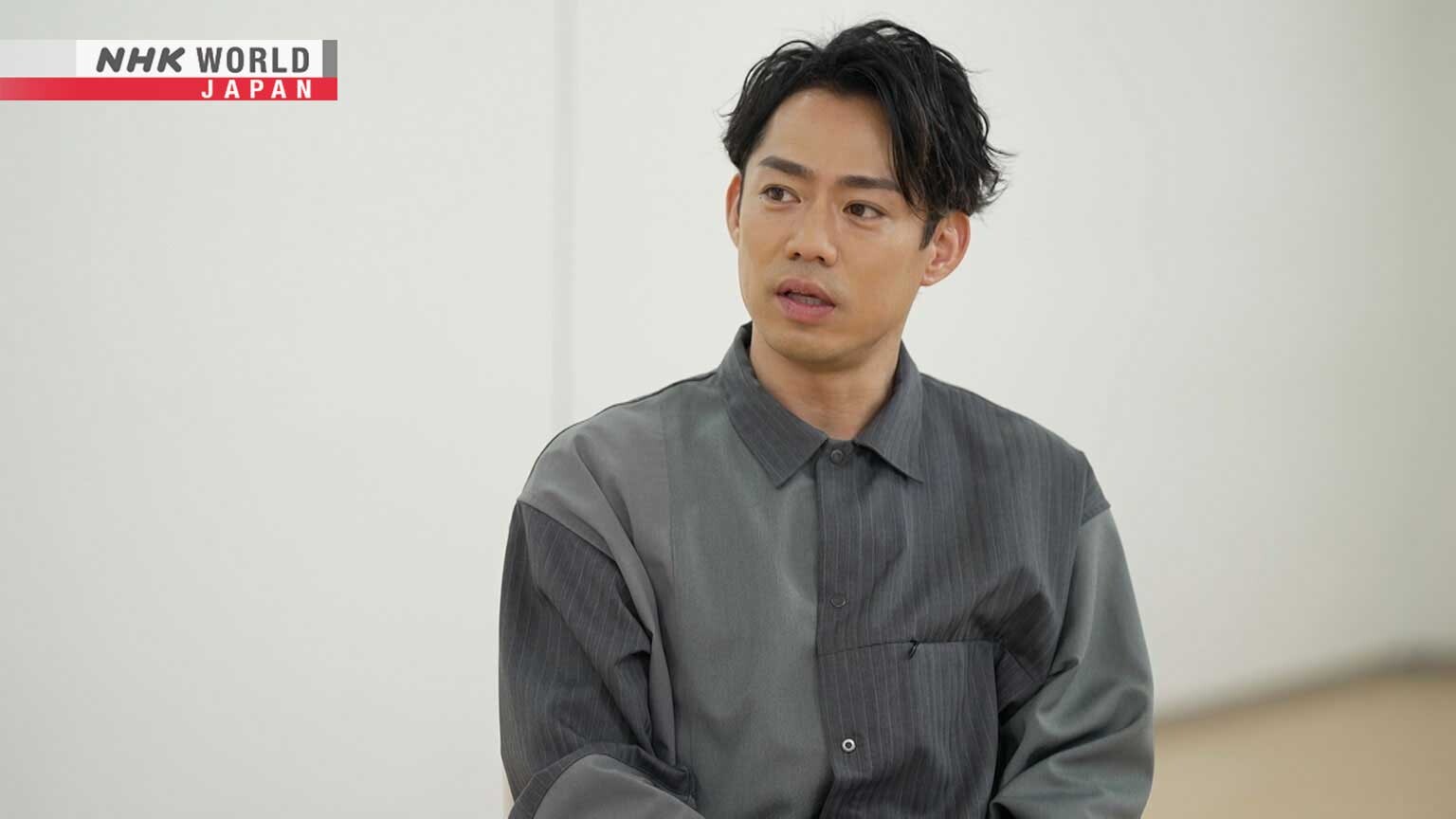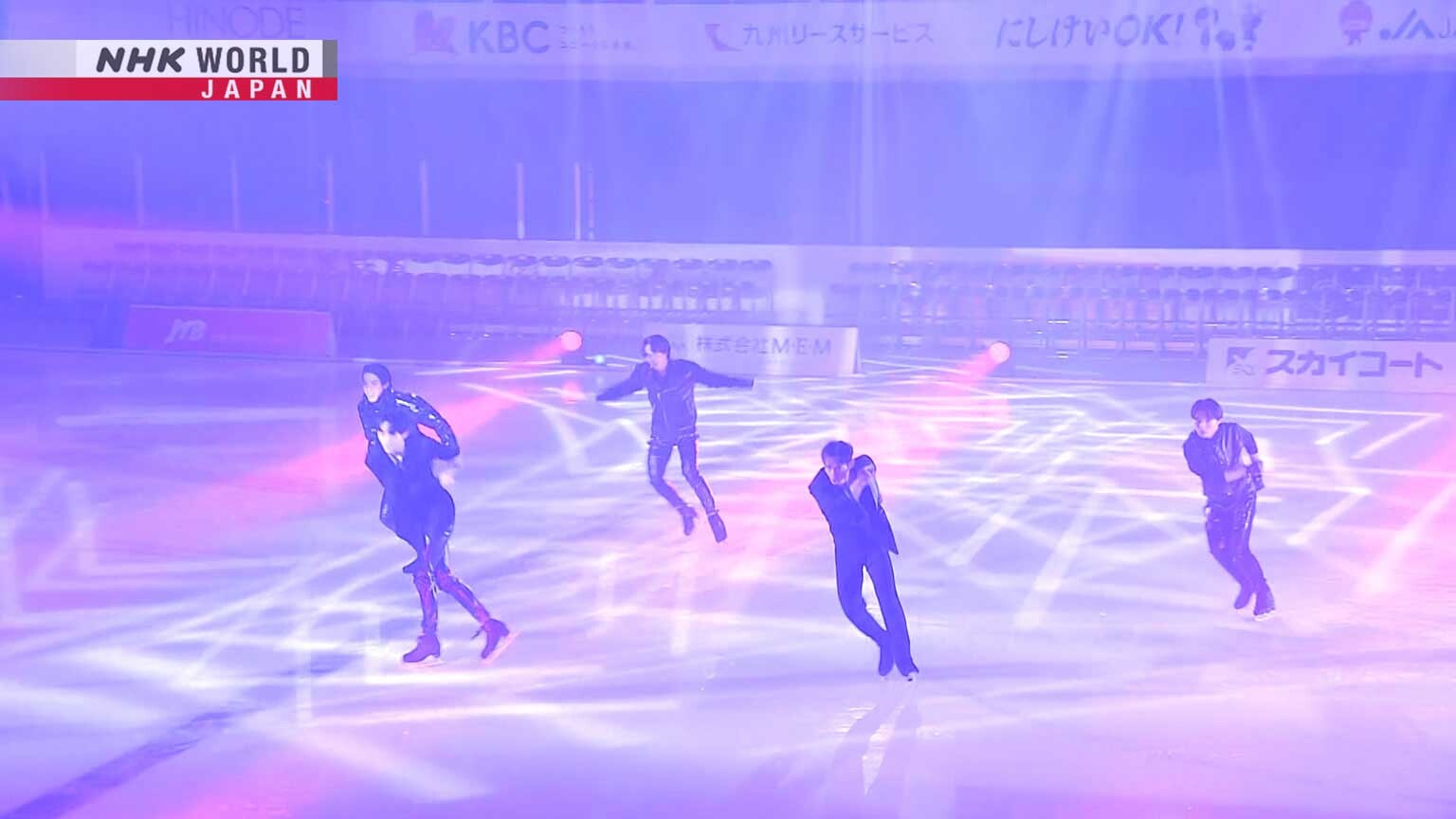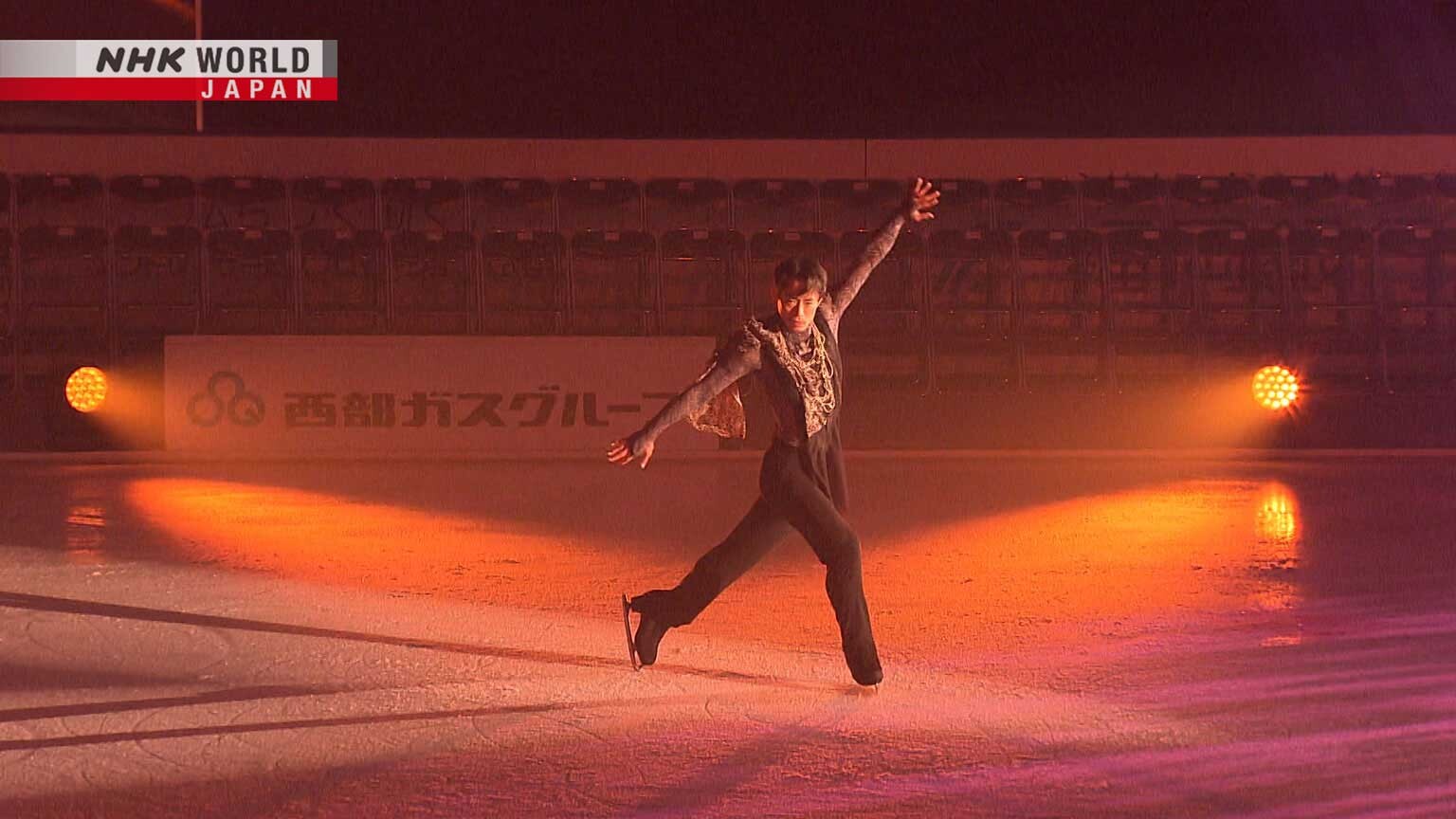Daisuke Takahashi: Trailblazing an Icy Horizon
In 2010, Daisuke Takahashi became the first Japanese male figure skater to win an Olympic medal. After retiring at age 37, he's now in the midst of producing a one-of-a-kind ice show from scratch.



Transcript
Japan has anxiously awaited this man's next move.
Figure skater Daisuke Takahashi.
Audiences are spellbound by his expressiveness.
He has led the men's figure skating scene in Japan,
winning Japan's first Olympic medal in the men's singles events at the 2010 Winter Olympic Games in Vancouver.
He switched to ice dancing at 33, and in just two years won silver at an international competition.
In May 2023, he announced his retirement from competitive skating.
This is the trickiest part: adjusting the choreography for ice.
His new ambition is producing his own ice show.
It's got to be this or something like it.
What drives his choices for casting, music selection, and choreography?
I hated that skating was all I could do.
I wanted to be able to do other things, too.
Our host Robert Campbell speaks with Takahashi to learn how he's breaking new ground in ice skating.
This is the rink where Takahashi practices.
Robert has been looking forward to this day.
It's a rare chance to see Takahashi practice up close.
He's preparing to perform in an ice show and is now practicing with Kana Muramoto, his former ice dance partner.
What about this? Has it been used before?
It's familiar.
Is it too fast?
No, it's cool.
They work on independent sections that will later be combined into a cohesive show.
Hi. You've been skating for over an hour.
Yes.
Like a fish in water.
- On ice, it's easier to keep moving than to stand still.
- Interesting.
I'm impressed by her.
She learns fast.
She's a singer, so she has a strong core.
These novice skaters will also appear in the ice show with Takahashi.
The ice show features a story that transcends time and space.
It's the third ice show in a series.
The previous show was based on Genji Monogatari, a Japanese classic written 1,000 years ago.
With skaters in traditional costume, it was a fusion of figure skating and Japanese aesthetics.
The performers were not all experienced skaters.
They were actors and singers who performed alongside Takahashi to create a one-of-a-kind spectacle.
The show called for Takahashi to sing and act as well.
Oh, Moon, when will you stop tormenting me?
This performer is still unsteady.
She's a singer who has never skated before.
If you tilt your head too far, you'll fall.
Bring your legs together to propel yourself forward.
During practice, Takahashi offers support.
I love figure skating. I've been a fan ever since I was a kid.
It's a treat to be able to perform with him.
His skating is awesome, even when he's teaching us.
Do you say lines while skating?
Yes, just mumbling to myself!
How does it feel to be leading the company?
The show was always about Japanese culture.
But this is our first modern story.
Not a classical epic. We touch on what's happening today.
So there's more dialogue.
Is that new for you?
Using speech rather than dance or choreography?
So new. These shows were the first time I did it.
I'm not very good at expressing myself in words.
But I found speaking dialogue was enjoyable.
Surprised?
Yes, I was never a verbal artist.
In a show, you must project your voice.
It took time to get used to speaking so loudly.
I'm working on it. But actors can make every word be heard.
It's not a natural way to speak. But onstage, we must be heard.
Yet also sound natural. There's so much to the art of speech.
Saying just one word can be really difficult.
I love the challenge.
You said Japanese culture is an ongoing theme.
Can you elaborate on that?
The first show in the series was a collaboration with a kabuki actor.
It was a surprisingly good match with figure skating.
Skating in a cold, tense atmosphere is an ethereal experience.
Japanese tales are often fantastical, which suits skating.
It featured a woman skating in a 12-layered kimono. Mind-blowing!
Historically, women in these kimono rarely ever stood up.
They had to slide on their knees to move about the imperial court.
They seemed to float. Like skating!
In classical Japanese dance, you lower your center of gravity.
Same with skating.
So there's a lot in common!
The only big difference is speed. The movement is very similar.
Figure skating draws from different genres.
Now you're adding acting to it. Will that open new doors?
Maybe. There are no limits to figure skating.
It incorporates different aspects.
That's why it's difficult.
An openness to different genres means you need to master them all.
- To win competitions.
- Yes.
But actors have to become different characters, too.
We use different tools but share the same goal.
So skaters and actors can learn from and inspire one another.
Well, I hope it goes both ways.
That mutual chemical reaction has created a new type of show.
At least, that's what I felt after our previous shows.
Takahashi began figure skating at age 7.
He became a top international competitor as a junior skater.
He won bronze at Vancouver in 2010, the first Olympic medal for Japan in the men's single events.
He competed in three consecutive Olympic Winter Games.
His first turning point came in 2014, when he announced his retirement at age 28.
When I retired the first time, I'd lost confidence in my skating.
I was so fed up with skating that I had no choice but to retire.
I wanted to escape.
I told everyone I was studying English and left for New York.
But I had no actual goal anymore. I was just passing time there.
From the age of 7, all your goals, everything, had been about skating.
I realized I had to pull myself together, so I returned to Japan.
I started doing ice shows and also a bit of TV.
As a commentator.
But I wasn't good at giving concise summaries.
The more I tried, the more flustered I got.
I hated that skating was all I could do. I couldn't accept it.
The more ice shows I did, the harder it was to skate well.
I lost confidence to the point of hitting rock bottom.
But I remembered my confidence always came from figure skating.
It had been the center of my life.
Nothing else worked without that core.
I saw the fastest way to recover was to come out of retirement.
Deep roots help you sprout new interests and enjoy new vistas.
But without them, you don't know who you are anymore.
Exactly. You become lost and can't figure out what to do.
If you know who you are, you can make choices.
Otherwise, you're likely to be easily swayed by others.
You're forever doubting yourself.
But once I was skating again, that disappeared. I knew what to choose.
It was easier to make decisions.
Which led to new developments.
It became a very positive cycle.
A second turning point came in 2018, when Takahashi returned to competitive skating at the age of 32.
His third turning point: making the switch to ice dancing.
He forged a new path forward, scoring highly in international contests.
You went from skating alone to having a partner for ice dance.
It's totally different, isn't it?
I knew I'd need a partner to keep entertaining and performing.
So I decided to take the plunge.
You two seem to be able to read each other's minds.
Like when she was pulling you behind her.
The grip felt wrong, maybe?
You just laughed at each other.
Communicating without words.
You seem to have perfect rapport.
It didn't happen overnight.
We used to argue. We'd talk for two hours on the ice.
Two hours trying to perfect 10 seconds of choreography.
Just over and over.
We didn't always see eye to eye. But our goals were the same.
Those honest arguments taught me a lot about my emotions.
I came to learn and accept who I was, both the good and the bad.
After three years of ice dancing, I'm a different person.
I used to be wary of sharing my thoughts.
I'm better at it now, and it's key to building new relationships.
After retiring from competitive skating in 2023,
he began working to produce an ice show of his own for the very first time.
There's not much of a theme.
The duration of the show is roughly 75 minutes.
It's an emotional rollercoaster. Ups and downs.
I put a lot of thought into the pacing.
But it's kind of dark, like me.
He masterminds everything, from the structure of the show to the selection of music.
I think... It might be hard with this speed.
The choreographer is dancer and stage director Yuma Suzuki.
She's never choreographed for skaters before.
It's tricky.
First, they practice Suzuki's choreography at a studio.
This is the trickiest part: adjusting the choreography for ice.
Performing the dance on ice is a totally different matter.
This won't work.
Takahashi continues to transform Suzuki's choreography for the ice.
One of the reasons he asked Suzuki to choreograph the show was because of the compositional beauty of her stage work.
He wanted to recreate the artistry of a well-coordinated ensemble on ice.
You're supposed to form a square.
The corners need to be sharp.
But on the ice, their timing is off, and they're not moving in sync.
Pay more attention to what she's saying.
She's had to repeat herself several times.
Takahashi has gathered a cast of 20.
He handpicked each member for their skating skills, rather than choosing based on performance results alone.
The youngest skater is just 16.
He grabs the audience's attention with every movement.
There's so much to learn from him.
Do you remember what you were doing when this video was taken?
Yes, I was so busy I didn't have time to practice my solos.
Right, as the leader, your needs come last.
Yes.
It feels like an epic laboratory for experimenting with expression.
It was fascinating to watch.
Ice shows are usually 2 to 2.5 hours long.
But just over an hour makes it less of a commitment for the audience.
There's no intermission.
That's part of the experiment.
We slashed ticket prices, too.
The show opens in Fukuoka, where 9 performances will be held over three days.
The first and only time they can perform the whole show in order is the day before the premiere.
Takahashi is faced with a crisis.
Three people called out... This is pretty bad.
Three cast members have fallen ill and are unable to perform.
This calls for major revisions to the choreography.
But the show has to open as scheduled.
They can't disappoint the audience.
There's no time to go through all the changes.
It's showtime. They have to wing it.
The show attracted 14,000 fans over three days.
Thank you!
Bravo!
As far as producing more ice shows,
I'd like to form a company and make more shows.
My cast isn't competing on a global level. Not yet.
They're at the domestic level.
I want young skaters to discover other ways to enjoy skating.
Some may choose to compete, to win.
But ice shows are another option.
I want to create a nurturing environment for young skaters.
Broaden their horizons.
Building bridges or pathways to the future is so important.
There's a need for networks that offer people diverse options.
What can skaters do after retiring?
You're providing an innovative, sustainable path.
Society needs true innovation. Not just chasing profit.
Products, ideas, and contests all need connection, sustainability.
I think those are the keywords.
Skaters are relatively young.
But standard ice shows aren't an option for mature skaters.
I'll need more ideas to continue skating myself.
Talking to you today, I see a bright future for ice skating.
I see it evolving with the times.
Skaters will be free to achieve their potential through new paths.
Right, especially with the advent of social media.
It's led to a surge in new forms of entertainment.
I feel the need to study and try different things.
It's fun, despite the risks.
If this ice show failed, I knew there'd be no next time.
But I enjoy the thrill of it all.
You can buy tickets online, so come see the show in Japan.
Yes, please come.
It's a show that should appeal to everyone, not just skating fans.
There's no language barrier.
It's still early days, but I'd love to travel with a Japanese show.
That means creating something worthy of an international tour.